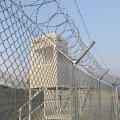Uber’s claims about making roads safer are challenged by new research
28 July 2016
New research does not support Uber’s claims that its car-sharing services have made the roads safer by limiting the numbers of individuals who drink and drive. Researchers from the Universities of Oxford and Southern California examined whether road traffic deaths related to drunk driving declined in counties where Uber had started operating. They found that the deployment of Uber in a given metropolitan county had no effect on the number of subsequent traffic fatalities. The paper, published in the American Journal of Epidemiology, says the results mean we should be sceptical of the broad claims already made about the effects of rideshare services in reducing traffic deaths.
Co-author Dr David Kirk, Associate Professor of Sociology and Fellow of Nuffield College at the University of Oxford, says: ‘If drunk drivers were rational, then in theory a service offering to make alternative forms of transport easier should bring down rates of drunk driving and road traffic deaths. However, the average inebriated individual contemplating driving may not be sufficiently rational to substitute drinking and driving for a presumably safer Uber ride. Another reason may be that many drunk drivers are not willing to pay for an Uber ride or taxi given the likelihood of getting arrested for drinking and driving is actually quite low in the US.’
Author Dr Noli Brazil, from the University of Southern California, comments: ‘Although Uber’s growth in terms of markets and drivers may be unprecedented, the number of Uber drivers may still be too small to have much of an influence on the 121 million incidents of drunk driving that take place each year in the United States. If the share of total trips by Uber drivers increases, then it is possible that we might see a reduction in road deaths in the future.’
Researchers compared monthly traffic fatality data from the National Highway Traffic Safety Administration for 2005 to 2014 for each of the 100 most populous US metropolitan areas. The rates were compared before and after Uber arrived in each metropolitan area (using information on dates of implementation published on Uber’s website and news on local media outlets). They also controlled for other factors, such as state beer taxes and state-level traffic policies governing seatbelt usage, licence revocation from drinking and driving, and the regulation of mobile phone use in cars. Their results show that counties with Uber services did not have any change in the rate of traffic fatalities as compared with counties where Uber had not yet arrived. This was the case whether they measured the total number of deaths on the roads, or just deaths where drunk driving was involved or where fatal road crashes happened during weekends and holidays.
The paper recognises Uber’s dominance in the US market. It highlights that as of April 2016, Uber was operating in more than 60 countries and 400 cities worldwide. It also notes that the Uber business model, through ‘surge pricing’, ensures there are enough drivers to meet demand, which reduces the challenge of finding a sober ride. However, it also points out that many passengers using Uber may have switched from taxis and public transport rather than switching from their own car, so the number of potential drunk drivers at risk of causing accidents may not have changed substantially.
The research paper comments that as of 2016, Uber still represents a relatively small share of transport rides in the United States. Despite the increase from a few thousand Uber drivers to 450,000 monthly drivers between January 2013 and April 2016, it says there are 210 million licensed drivers in the United States, and an estimated 4.2 million adults driving over the blood alcohol limit in any given month.
For the full paper or further information, contact [email protected]; or the University of Oxford News Office on:[email protected]/ or Tel: 00 44 (0)1865 280534.
Alternatively, contact the University of Southern California News Office at [email protected] or Tel: 00 1 (213) 740-2215.
Notes for Editors:
- The paper, Uber and Metropolitan Traffic Fatalities in the United States, is by Noli Brazil (University of Southern California) and David Kirk (University of Oxford). It is published online at: http://dx.doi.org/10.1093/aje/kww062
- Ride sharing with Uber connects passengers with drivers through a smartphone app, which also calculates and processes costs, and tracks drivers.
- Traffic fatalities are one of the leading causes of death in the United States, particularly for teenagers and young adults, with nearly 33,000 people dying from motor vehicle crashes in 2014, with another 2.3 million injured (according to data from the US National Highway Traffic Safety Administration).
 New database sheds light on violence in Greek detention facilities
New database sheds light on violence in Greek detention facilities
 Oxford researchers comment on the plastic waste crisis for Earth Day 2024
Oxford researchers comment on the plastic waste crisis for Earth Day 2024
 New trial using skin patches as an ‘early warning system’ to spot lung transplant rejection
New trial using skin patches as an ‘early warning system’ to spot lung transplant rejection
 New study on Amazonia's fire crises urges action ahead of the next burning season
New study on Amazonia's fire crises urges action ahead of the next burning season
 New heart disease calculator could save lives by identifying high-risk patients missed by current tools
New heart disease calculator could save lives by identifying high-risk patients missed by current tools